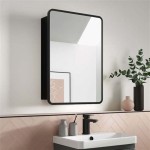How to Screen Mirror iPhone to Samsung TV with Apple Remote
Screen mirroring allows users to wirelessly display the content of an iPhone onto a larger screen, such as a Samsung TV. While designed by different manufacturers, iPhones and Samsung TVs can effectively communicate through various established protocols. This article provides a comprehensive guide on how to screen mirror an iPhone to a Samsung TV, specifically addressing the integration of the Apple Remote as a potential control mechanism.
The process typically involves leveraging technologies like AirPlay 2 or third-party applications to facilitate the connection. Compatibility between the iPhone and Samsung TV model is also a crucial factor. Successfully mirroring the screen enables activities like watching videos, viewing photos, playing games, or presenting documents on a larger display for enhanced viewing and collaborative experiences.
It is important to note that the Apple Remote's direct control over the mirrored content on the Samsung TV is limited by the operating system and application support. The Apple Remote is primarily designed for controlling Apple devices and Apple TV functions. While some limited functionality might be possible through HDMI-CEC (Consumer Electronics Control) if enabled on both devices, this often doesn't extend to comprehensive control of mirrored iPhone content. The following sections will detail the steps and considerations for achieving successful screen mirroring, as well as explore potential workarounds for remote control if direct integration with the Apple Remote isn't feasible.
Understanding AirPlay 2 Compatibility
AirPlay 2 is Apple's proprietary protocol for streaming audio and video content between Apple devices and AirPlay 2-compatible devices. Many newer Samsung TVs are equipped with AirPlay 2, offering a seamless method to mirror an iPhone screen without the need for additional hardware or software installations on the TV. Before proceeding, it is essential to verify if the specific Samsung TV model supports AirPlay 2. This information can typically be found in the TV's product specifications on the Samsung website or in the user manual.
To check for AirPlay 2 compatibility on the TV, navigate to the TV's settings menu. Look for sections related to "Apple AirPlay Settings," "AirPlay," or "Apple Settings." If these options are present, the TV is AirPlay 2-compatible. If the TV does not support AirPlay 2 natively, alternative methods, as outlined in subsequent sections, are necessary to achieve screen mirroring.
Assuming AirPlay 2 is supported, ensure both the iPhone and the Samsung TV are connected to the same Wi-Fi network. This is a fundamental requirement for AirPlay 2 to function correctly. Discrepancies in network connections will prevent the devices from recognizing each other.
Steps to Mirror via AirPlay 2
Once the AirPlay 2 compatibility is confirmed and both devices are on the same Wi-Fi network, the screen mirroring process can begin. The following steps detail the procedure on the iPhone:
- Open Control Center: Swipe down from the top-right corner of the iPhone screen (on iPhones with Face ID) or swipe up from the bottom of the screen (on iPhones with a Home button) to access the Control Center.
- Tap Screen Mirroring: Look for the "Screen Mirroring" icon, which resembles two overlapping rectangles. Tap this icon to initiate the screen mirroring function.
- Select the Samsung TV: A list of available AirPlay 2 devices on the network will appear. Select the corresponding Samsung TV from the list. The TV's name is typically displayed as it is labeled in the TV's settings.
- Enter the AirPlay Passcode (if prompted): If this is the first time connecting the iPhone to the Samsung TV via AirPlay 2, a passcode might appear on the TV screen. Enter this passcode on the iPhone when prompted. This is a security measure to prevent unauthorized screen mirroring. Subsequent connections might not require a passcode if the iPhone is set to remember the TV.
After these steps are completed, the iPhone screen should be mirrored onto the Samsung TV. Any content displayed on the iPhone will simultaneously appear on the TV screen. Volume can be controlled via the iPhone. To stop screen mirroring, repeat steps 1 and 2, and then select "Stop Mirroring" from the list of available devices.
Troubleshooting tips for AirPlay 2 include verifying the Wi-Fi connection strength on both devices, restarting both the iPhone and the Samsung TV, and ensuring that the AirPlay settings on the TV are enabled and configured correctly. Sometimes, a simple reboot can resolve connectivity issues.
Exploring Third-Party Mirroring Applications
If the Samsung TV does not support AirPlay 2, or if encountering difficulties with the AirPlay 2 connection, third-party screen mirroring applications offer an alternative solution. These applications require installation on both the iPhone and the Samsung TV, creating a communication bridge that bypasses the native AirPlay 2 protocol. Several reputable applications are available for this purpose, each with its own set of features and pricing models.
Popular screen mirroring applications include "MirrorMeister," "AirBeamTV," and "LetsView." These applications typically work by establishing a direct Wi-Fi connection between the iPhone and the Samsung TV. The iPhone app captures the screen content and transmits it to the app running on the TV, which then renders the image. While the mirroring quality and latency can vary depending on network conditions and the application's performance, these apps often provide a viable solution for older Samsung TV models or when AirPlay 2 is unreliable.
To use a third-party mirroring application, download and install the corresponding app on both the iPhone (from the App Store) and the Samsung TV (from the Samsung App Store). Launch the apps on both devices and follow the on-screen instructions to establish the connection. This usually involves selecting the TV from a list of available devices within the app on the iPhone.
Before committing to a specific application, consider testing the free trial or the limited free version (if available) to assess its performance and compatibility with the specific iPhone and Samsung TV setup. Factors to evaluate include mirroring quality (resolution and frame rate), latency (delay between actions on the iPhone and their appearance on the TV), and ease of use.
Apple Remote Functionality and Limitations
The Apple Remote is primarily designed to control Apple devices, such as the Apple TV. Its functionality with a Samsung TV connected via screen mirroring from an iPhone is limited. Ideally, the Apple Remote controls the device that is outputting the stream (an AppleTV), not the receiving TV.
When an iPhone is mirrored to a Samsung TV, the Samsung TV is essentially functioning as a display, receiving the video and audio signal from the iPhone. The iPhone itself is the device controlling the content. Hence, the Apple Remote will control the Apple device, and potentially may not control anything on the Samsung TV.
However, If HDMI-CEC (Consumer Electronics Control) is enabled on *both* the Samsung TV and the device plugged into it (like an Apple TV that is then AirPlaying to the TV), certain basic functions of the Apple Remote *might* work with the Samsung TV. HDMI-CEC allows interconnected devices to communicate and control each other to some extent. If HDMI-CEC is configured correctly, the Apple Remote may be able to perform actions such as powering the Samsung TV on or off, adjusting the volume, or navigating the TV's menu system. This functionality is not guaranteed, and depends on the specific Samsung TV model and its HDMI-CEC implementation. To enable HDMI-CEC, search the Samsung TV settings for options like "Anynet+" or "HDMI-CEC." Remember that this is about controlling the TV itself, and may not control content being mirrored from an iPhone, even if connected to an Apple TV.
Beyond HDMI-CEC, direct control of the mirrored iPhone content on the Samsung TV via the Apple Remote is usually not possible. The iPhone remains the primary control device, and actions like pausing, playing, fast-forwarding, or rewinding videos must be performed on the iPhone's screen or through the application used for playback. This limitation arises because the Apple Remote is not designed to directly interface with the operating system or applications running on the iPhone when screen mirroring to a non-Apple device.
If the Apple Remote is not providing the desired level of control, consider using the Samsung TV's remote or the iPhone's screen for navigating and controlling the mirrored content. Alternatively, some third-party mirroring applications may offer a virtual remote control feature within the iPhone app, allowing remote control of the TV via the app rather than through the Apple Remote. These virtual remote features are application-specific and may not be universally available across all mirroring applications.
One additional note: If you are using the Apple Remote to control an AppleTV that is mirroring the iPhone, the source of the stream is still the iPhone. The AppleTV is still the display, and so, the Apple remote would control the AppleTV.
In summary, while screen mirroring an iPhone to a Samsung TV offers a practical way to view content on a larger screen, direct control using the Apple Remote is generally limited. AirPlay 2 and third-party applications are the primary methods for establishing the connection. Understanding the limitations of the Apple Remote and exploring alternative control options, such as the Samsung TV's remote or virtual remotes within mirroring applications, enhances the overall user experience.

How To Screen Mirror Iphone Samsung Smart Tv

3 Ways To Screen Mirror Iphone Samsung Smart Tv New Tech World

4 Easy Ways To Mirror Iphone Samsung Tv For Free

How To Screen Mirror An Iphone A Samsung Tv Zdnet

Use Airplay To Stream Or Mirror The Screen Of Your Iphone Ipad Apple Support

Top 4 Ways To Screen Mirror Iphone Samsung Tv 2024

4 Easy Ways To Mirror Iphone Samsung Tv For Free
How To Do Screen Mirroring From An Iphone A Samsung Smart Tv That Is 2024 Model Quora

How To Screen Mirror Iphone Samsung Tv Ios Airbeamtv

6 Free Ways To Mirror Iphone Samsung Tv Without Apple








